Fertilizing St. Augustine Grass
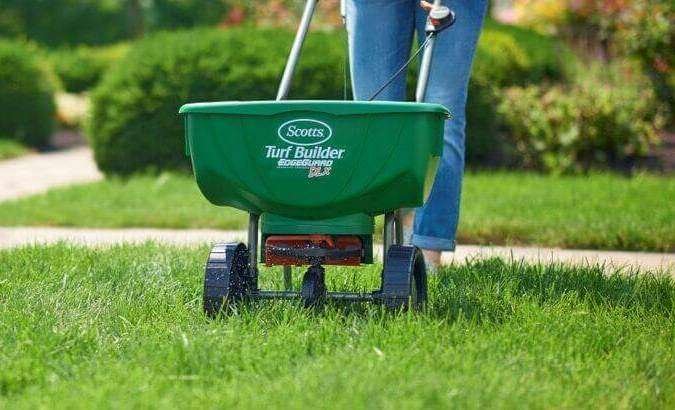
Everyone loves a beautiful healthy lawn. There’s a variety of essential nutrients that are required to achieve good growth and appearance for St. Augustine lawns. With a proper program of Fertilizing St. Augustine Grass one can obtain success. St. Augustine grass needs air, water, sunlight, and food to be healthy and vigorous. Following the correct guidelines assures that you will have the lawn you desire.
Use Quality Fertilizer When Fertilizing St. Augustine Grass
The proper food needed for Fertilizing St. Augustine Grass should be in granular lawn fertilizers sold at nurseries and garden centers. There are different brand names available and results will depend on the quality of the product.
Generally, cheaper brands add fillers such as sand, not giving the correct amount of nutrients. Spreading poor quality granular fertilizer causes an uneven application resulting in a lawn not completely green. That is why I recommend using a good quality brand where each pellet contains the correct amount of nutrients and is clean of waste.
It is important that pellets break down properly feeding your lawn with a balanced rate. A good quality “Slow-Release” granular fertilizer will work best. Use a well-respected brand name that has a good reputation, one that you can trust.
Reading Fertilizer Labels
The law requires that labels be affixed to the bag, package, or container. Labels need to show information on the “Analysis”, and “Composition” of the mixture. Plus containing the “License Number” so the product can be identified, protecting the consumer. Fertilizer labels should list the materials from which they were made and can be found next to the “Derived From” statement.
The percentage of primary elements is listed first followed by the secondary elements for fertilizing St. Augustine grass.
Fertilizer should contain N,P, and K, in that order.
The primary elements are commonly known as Nitrogen (N), Phosphorus (P2 O 5), and Potash (K2 O).
The secondary elements are Manganese (Mn), Iron (Fe), Sulfur (S), and Chlorine (Cl).
All these nutrients need to be in the product for St. Augustine lawns to receive the food it needs to be at its best. For a fertilizer to be a “Complete” fertilizer all of these elements should be present.
It is important to follow the “Rate Of Application” listed on the label when fertilizing St. Augustine grass. “Spreader Settings” listed on the label are important and need to be set correctly. I recommend using a “Rotary Spreader”.
Chemicals can be harmful to lawns if applied at a higher rate than suggested. Especially when using a Weed “n” Feed for fertilizing St. Augustine Grass, for it can burn your lawn. It will kill your grass if applied over excessively, so Do Not over do it. Also remember, under using turf fertilizer will not obtain the best results and be a waste of money. Always read the label!
Proper Application
Fertilizers applied improperly can cause environmental problems. Keep excessive amounts from getting in the street. Use a guard on the spreader to avoid this. Use a blower or broom to put it back on the lawn to avoid it from going into drains.
Do not apply fertilizer within Ten Feet of lakes and rivers. Chemicals too close will seep underground into the water over a period of time. It is recommended to use a Slow-Release granular fertilizer for controlling pollution and protecting our environment. We can still have a beautiful lawn and help our Eco-System from being ruined if it is done properly.
When fertilizing St. Augustine grass with a spreader remember to overlap a little when making each pass so you won’t have stripes on your lawn. Walk at a steady pace making sure you are not going too slow to avoid problems. Too fast, you might not put enough down. Each bag should tell you how many square feet it should cover.
Final Thoughts
Fertilizing St. Augustine Grass done correctly will give you the St. Augustine lawn you desire, and protect our environment. Using good quality fertilizer with the proper nutrients, assures a green-looking lawn that is healthy and vigorous.
So when people see it… they will say “I want my lawn to look like that”. Be the envy of the neighborhood.
Keep on Growing!

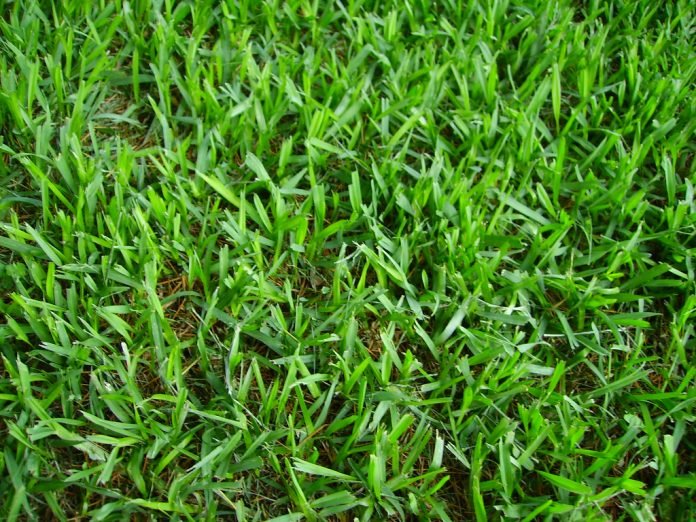
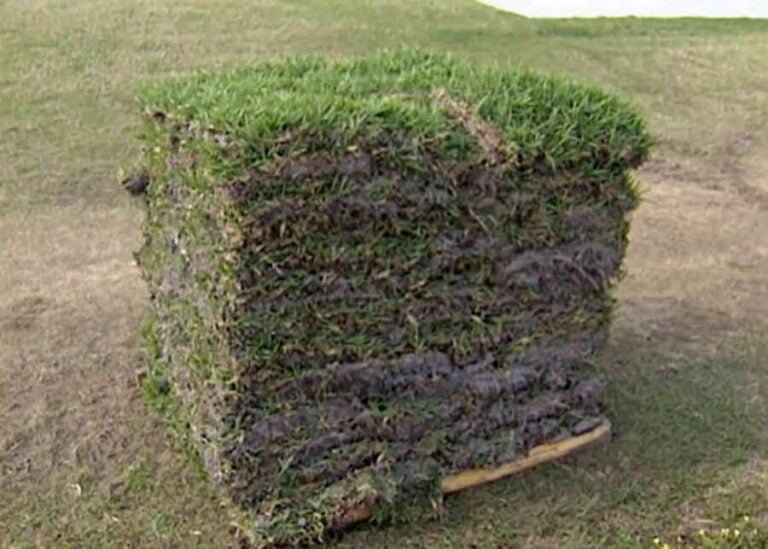

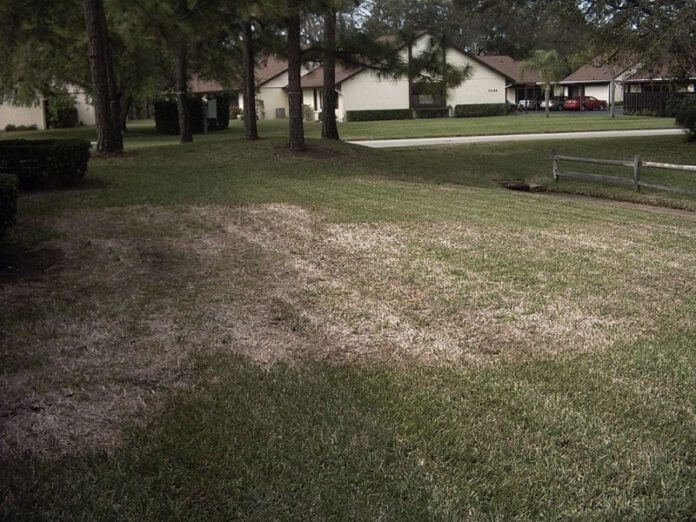
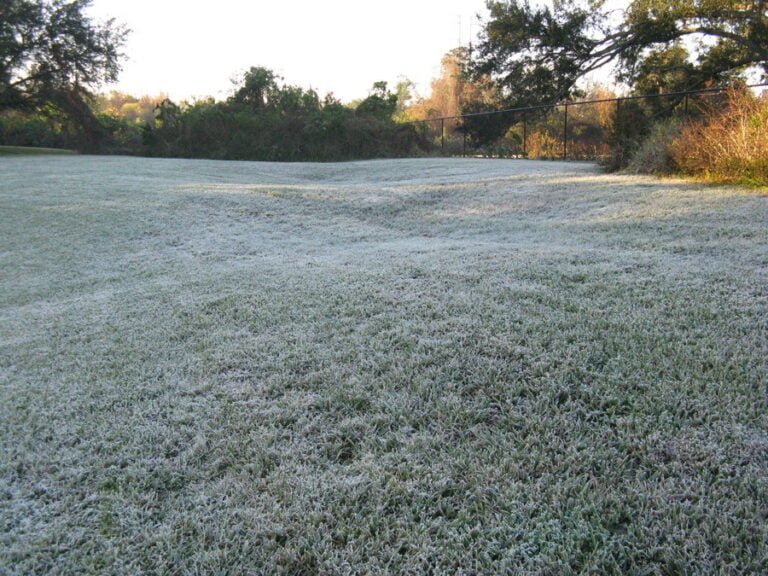

Great informative site…
I have St Augustine grass which has done very well exept for some small areas with mold damage from poor drainage. I usually got away with mowing bi-weekly even in the summer (pushing the limit a little with growth). My neighbor put in some form of bahia last year and now it has started invading my lawn and I have to mow every 5-7 days this summer.
Is there something I can do to kill or suppress the bahia and not harm my lawn?
Thanks in advance.
Bob,
The reason for the Bahia grass invading your lawn is most likely due to, Bahia forms tall seed heads throughout the months of spring, summer, and fall, and as the wind blows the seeds are spreading into your yard. Mowing Bahia on a regular basis can keep the seed heads from forming. You can spray the areas in your St. Augustine lawn where Bahia is growing with a liquid weed control made for St. Augustine grass. Bahia grass has a low tolerance for many herbicides so it should die off. MAKE SURE WHATEVER WEED CONTROL YOU USE CAN BE USED DURING THE HOT SUMMER MONTHS, OTHERWISE IT WILL BURN YOUR LAWN OR POSSIBLY KILL IT! READ THE LABEL FIRST BEFORE APPLYING ANY WEED CONTROL! Mowing St. Augustine grass too infrequently will cause more weed problems and thatch buildup. So I recommend Mowing once a week during the summer at a height of 3 to 4 inches. During fall and winter you can mow every two weeks.
Thank you for your comment,
Kurt
My grass is st augistine and Bahia and it has damage and I have been researching. Can you tell me which fertilizer and weed killer can I use?
Barbara,
You can apply a fertilizer to the whole lawn that is for feeding only. DO NOT apply one to the whole lawn with weed control in it, like a weed’n’feed. The chemicals in a St. Augustine grass weed’n’feed will kill the Bahia.
You have to use a different kind of chemical for weed control for each type of grass, one specifically made for St. Augustine, one for Bahia. If the two types of grass are mixed together and you apply St. Augustine weed control, the Bahia will die off. If they are not mixed together, for example the front yard is St. Augustine and back yard is Bahia then do weed control separately.
Kurt